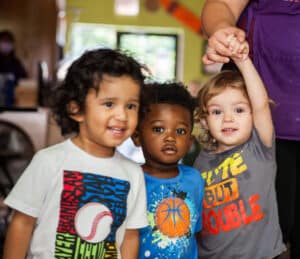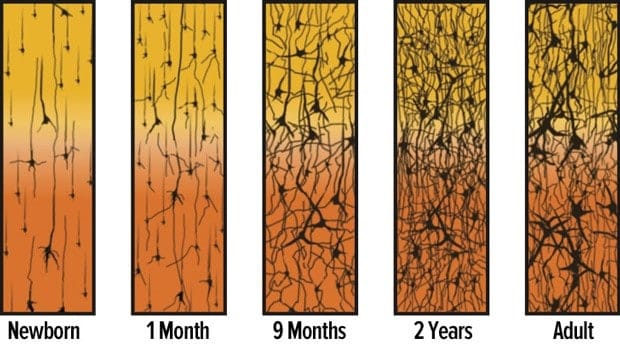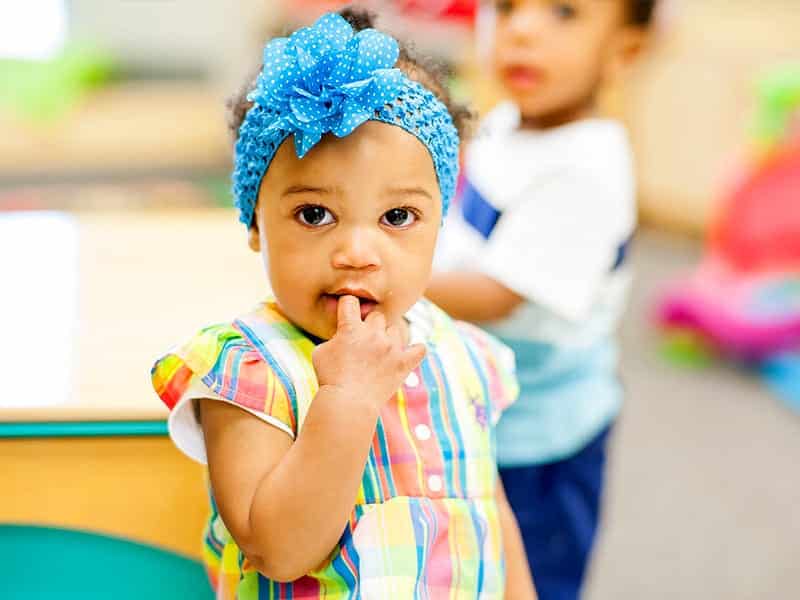Our vision is that every community has a comprehensive, equitable prenatal-to-five system that delivers excellent programs through a stable, well-supported and compensated workforce. The flexible, multi-year funding grant from Ballmer Group has allowed Start Early to build new partnerships, advance core program priorities, and bring new capabilities to our work. For example, Start Early’s merger with the Early Learning Lab brought human-centered design approaches to build more equitable solutions, programs and policies informed by community voices.
Supporting the Early Childhood Workforce Is Critical to the Success of Young Children
 Early childhood educators serve young children in their most critical developmental years and lay the foundation for lifelong learning and wellbeing. They provide stable and nurturing relationships that promote brain development and build the social, emotional, and academic skills of our youngest learners who will become our future workers, innovators, and leaders. Yet they are often underappreciated and under-compensated. Unfortunately, low wages, combined with limited access to professional development and growth opportunities, created a workforce crisis, only exacerbated by the COVID-19 pandemic.
Early childhood educators serve young children in their most critical developmental years and lay the foundation for lifelong learning and wellbeing. They provide stable and nurturing relationships that promote brain development and build the social, emotional, and academic skills of our youngest learners who will become our future workers, innovators, and leaders. Yet they are often underappreciated and under-compensated. Unfortunately, low wages, combined with limited access to professional development and growth opportunities, created a workforce crisis, only exacerbated by the COVID-19 pandemic.
It’s important that educators get the training and support they need to grow their knowledge and skills and collaborate and share best practices with colleagues. Support from Ballmer Group allowed Start Early to expand professional development opportunities to prepare the workforce to meet the ever-changing needs of young children and families. Today, we support nearly 300,000 early childhood professionals and impact 1.5 million young children annually.
Our work is focused on creating virtual and face-to-face training and resources on topics of vital importance to our childcare and workforce, including family economic mobility, equity, recruitment, and family engagement. In 2020, Start Early was awarded one of four highly influential Office of Head Start National Centers — the National Center for Parent, Family and Community Engagement.
Equitable Systems Create Endless Possibilities for ALL Children and Families
At Start Early, we are focused on driving forward a unified prenatal-to-five system. We have long believed that universal programs, with a common definition of quality, a shared measurement for assessing progress and the ability to scale innovation and best practices can have transformative and sustained impact on millions of children.
We’ve continued to grow our systems-building work and now partner with advocates and public sector leaders in 17 states, promoting more equitable practices and policies that benefit 6.5 million children. We recently supported states and communities in maximizing American Rescue Plan Act funds to advance their early childhood programs and services.
We are grateful for Ballmer Group’s continued support of Start Early’s mission. As champions of early learning, we are committed to helping families with young children thrive. We will continue to deepen our support for early childhood professionals. And we will stay relentlessly focused on driving forward an early learning system that’s seen as an integral part of our nation’s commitment to children, families and future generations.
Ballmer Group is committed to improving economic mobility for children and families in the United States. They fund leaders and organizations that have demonstrated the ability to reshape opportunity and reduce systemic inequities. To learn more, visit: www.BallmerGroup.org.


 The We Care Center provides a way for family members to express caring and empathy for others. Fill your We Care Center with supplies like minor first aid items (Band-Aids, wet wipes, hand sanitizer, scented lotion), card-making supplies (preprinted cards, paper, crayons, sentence starters), and a tiny stuffed animal for cuddling.
The We Care Center provides a way for family members to express caring and empathy for others. Fill your We Care Center with supplies like minor first aid items (Band-Aids, wet wipes, hand sanitizer, scented lotion), card-making supplies (preprinted cards, paper, crayons, sentence starters), and a tiny stuffed animal for cuddling.


 For over 40 years, Start Early has worked directly with families and children from before birth to entry into kindergarten. We
For over 40 years, Start Early has worked directly with families and children from before birth to entry into kindergarten. We  Early childhood educators serve young children in their most critical developmental years and
Early childhood educators serve young children in their most critical developmental years and 